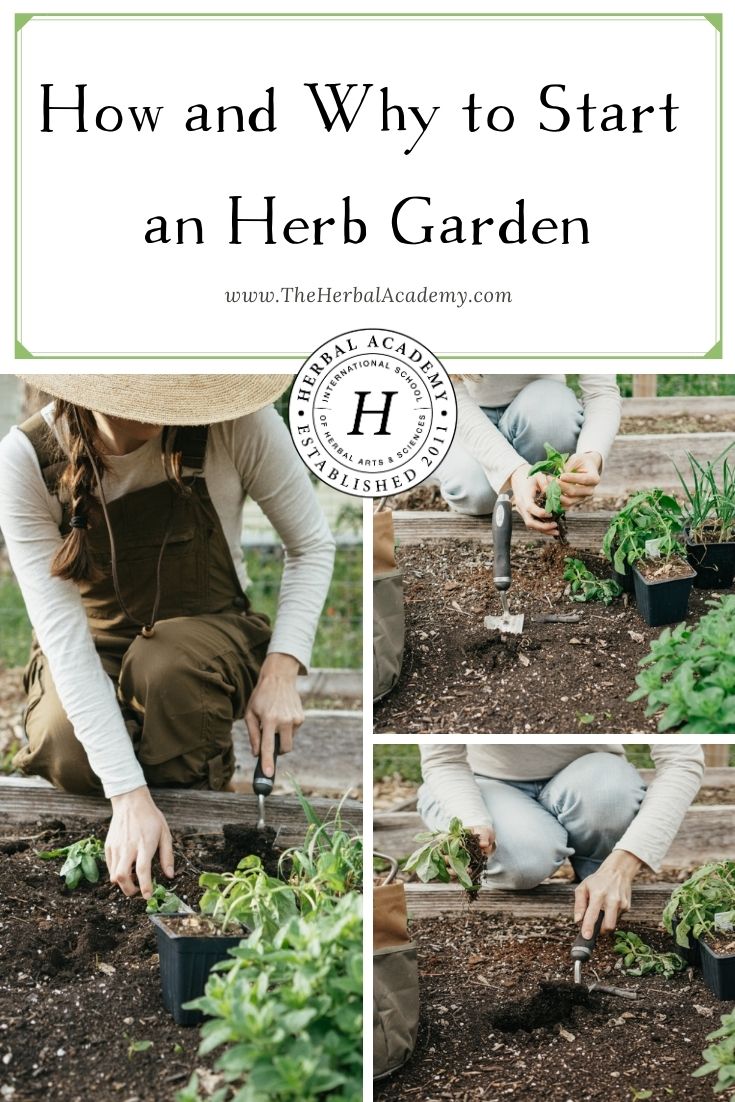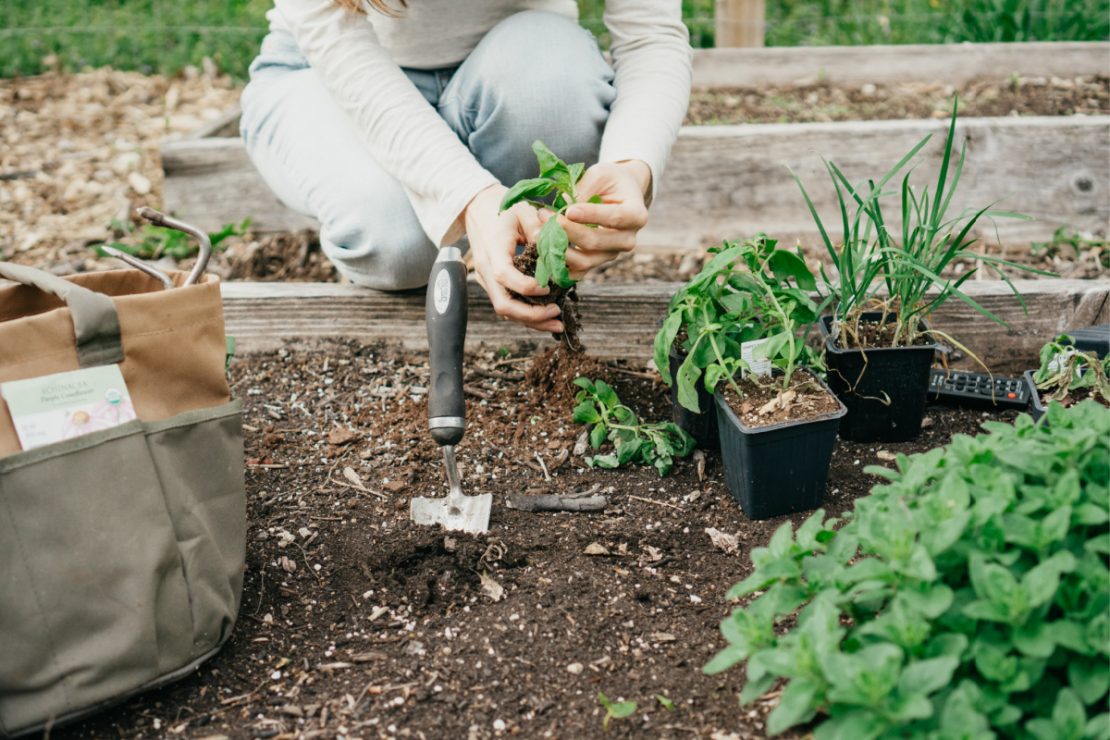
How and Why To Start an Herb Garden
As a kid growing up in Ohio, I really looked forward to the growing season. My father always had a love for plants (mainly flowers) and would take us to the local garden centers to grab the flowers for that year’s gardens. However, when our family first moved into our house there were no plants or gardens to be found. Over many years, my dad has meticulously cultivated his flower garden; it has become a sanctuary and the best spot at the house to hang when the weather is warm.
I think his green thumb began to rub off on my mother because a few years later she started an herb garden all of her own and I was hooked! As a child, I was fascinated that the plants we had in the garden could be taken right from the ground and end up on our plates. It felt like true magic.
A Garden of My Own
As an adult, I never had the opportunity to have an herb garden of my own and so I lost a little bit of that connection to growing food. Every time I went home during the summer I would always ask my mom to use what she could from the garden. I wanted to keep that spark alive so that one day I would have a garden of my own—and in 2020 I finally did!
In 2019 I bought my first home on 10 acres of land and I told myself that I would start a garden in our very first season. As an herbalist, I was getting a nudge to form a deeper relationship with plants and so I thought growing my own herbs would be the perfect opportunity to dig a little deeper.
Because I was planting out of mere curiosity, I chose so many different varieties of herbs to grow. I wanted to know what the seeds looked like, what nutrients would allow my herbs to thrive, what each stage of plant life looked like, and what it felt like to harvest my herbs. I had so many questions for my garden and my herbs, so I poured all of that excitement into this new endeavor..
Having an herb garden of any size and style can be so rewarding. As I spent time with the plants I felt as if I was participating in a sacred relationship with the land. Growing herbs has taught me so much about how to interact with herbs in my personal practice and in my business. Even if you grow just one herb you unlock a world of knowledge. Therefore, I invite you to explore the possibility of starting an herb garden this season. If you don’t know where to start, no worries, I’ve got your back! Let’s get growing.
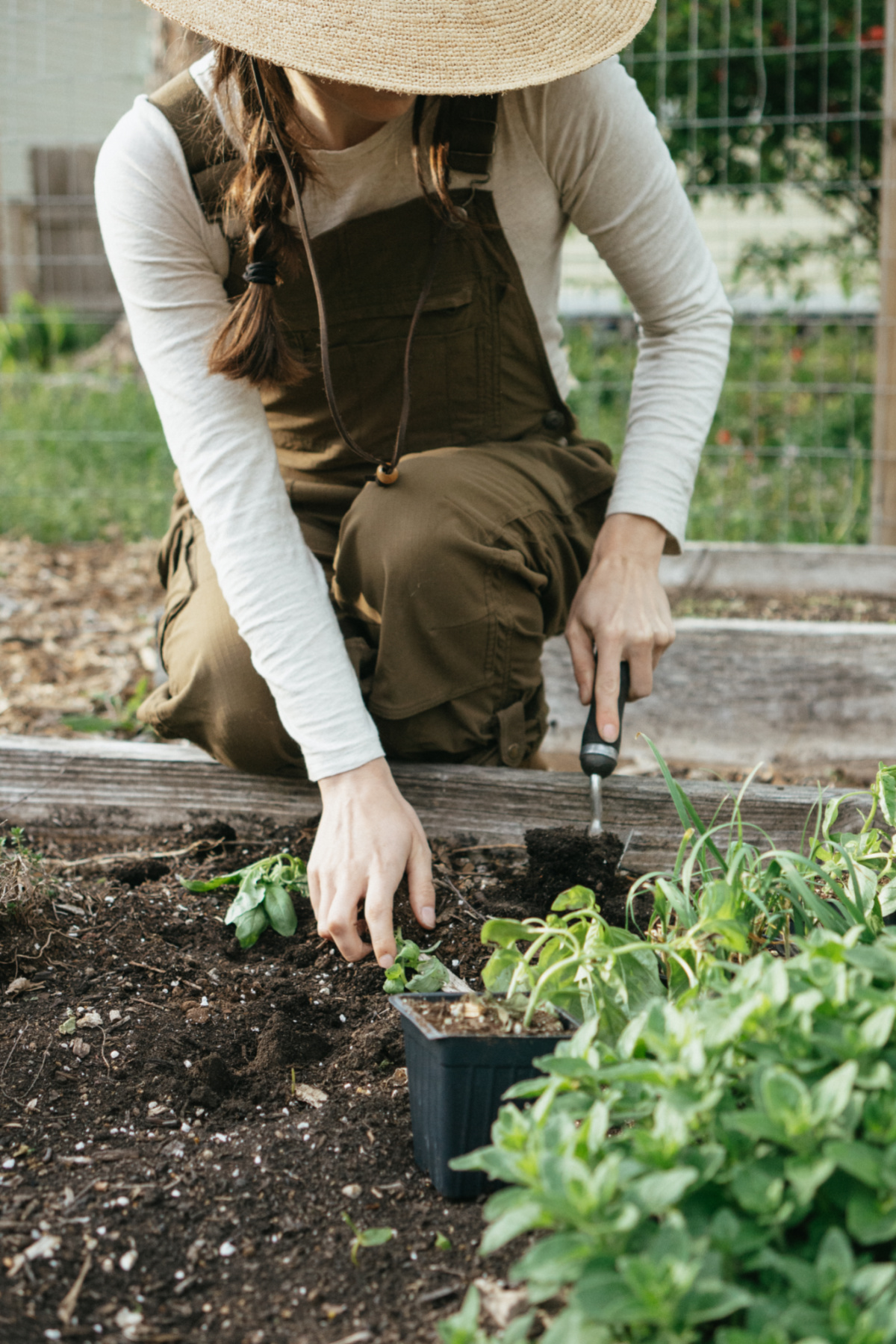
How to Start An Herb Garden
Planning Your Garden
Having an herb garden no matter what size takes a little bit of planning. Once you are ready to start growing you will need two important pieces of information: what zone are you located in and when is your last frost date for your area? Knowing this information will let you know what plants thrive best in your area and when is the best time to grow your plants outside.
When you are just starting out, I find it’s best to pick a focus or purpose for your garden. Then you can narrow down the types of seeds and plants that you choose to grow. Are you wanting a kid-friendly garden? Try growing chamomile (Matricaria chamomilla) or catnip (Nepeta cataria). Maybe you want an herb garden to support you during stressful situations? Try growing lemon balm (Melissa officinalis) or tulsi (Ocimum tenuiflorum). Do you love using herbs to support your skincare rituals? Why not grow some calendula (Calendula officinalis) this year? The purpose of your garden can truly be anything. Let your imagination run wild and enjoy the creative process along the way!
Once you know your zone, frost date, and garden focus it’s now time to decide how you want to grow this season. I’ve spent hours on Pinterest looking at different growing styles so when I say you can grow herbs out of anything I truly mean it.
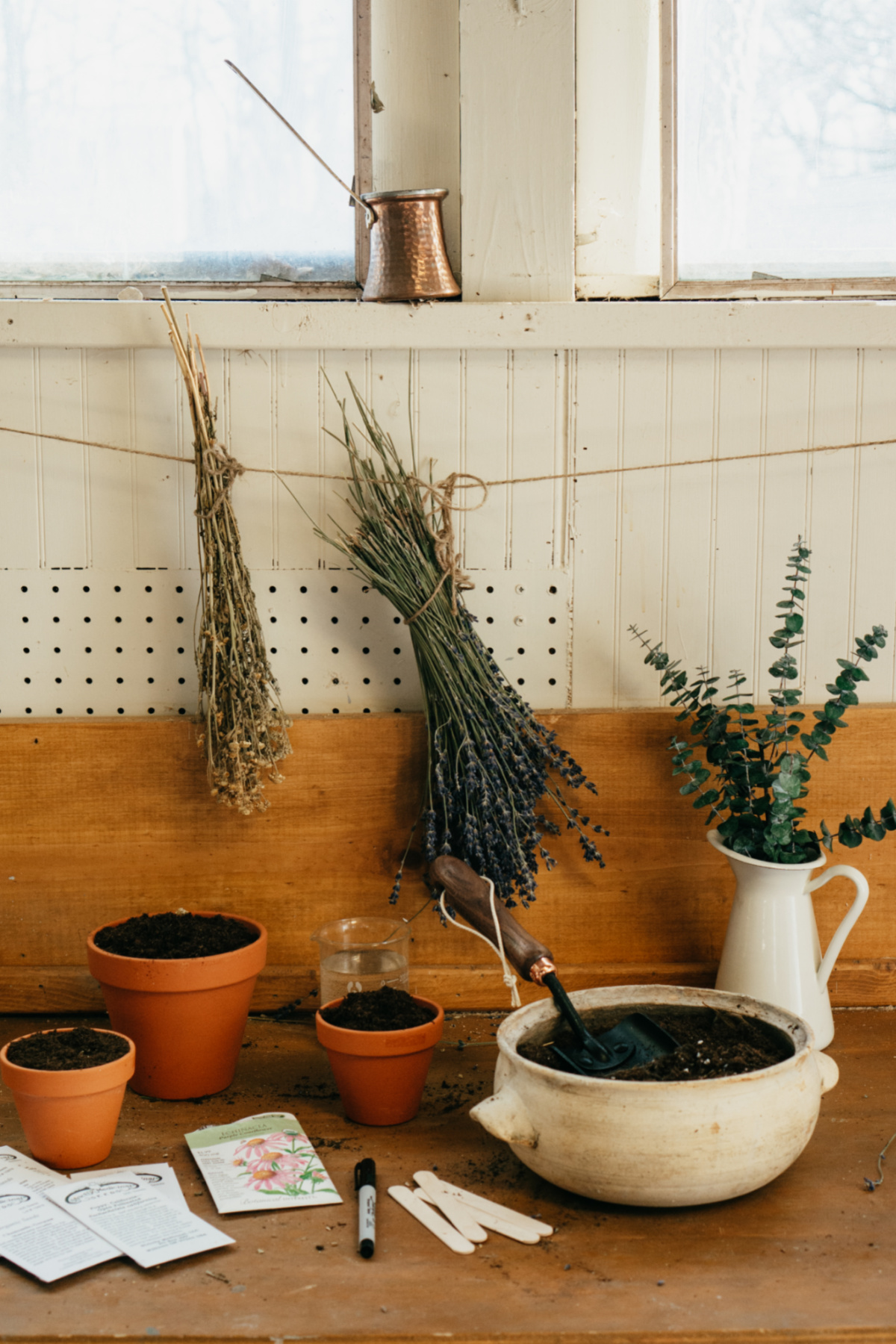
Growing An Herb Garden in Small Spaces
If you live in an apartment or don’t have outside space to grow, then container or vertical gardening might be perfect for you. You can grow herbs in your windowsill, your balcony, or even your front steps. As long as you have good light your herbs will grow. You will be surprised at how much you can grow in small spaces. Once the growing season was finished I decided to move some of my plants into containers and bring them inside. I grew rosemary (Rosmarinus officinalis), tulsi (Ocimum tenuiflorum), turmeric (Curcuma longa), and ginger (Zingiber officinale) inside this winter and was able to continue to enjoy fresh herbs throughout the year.
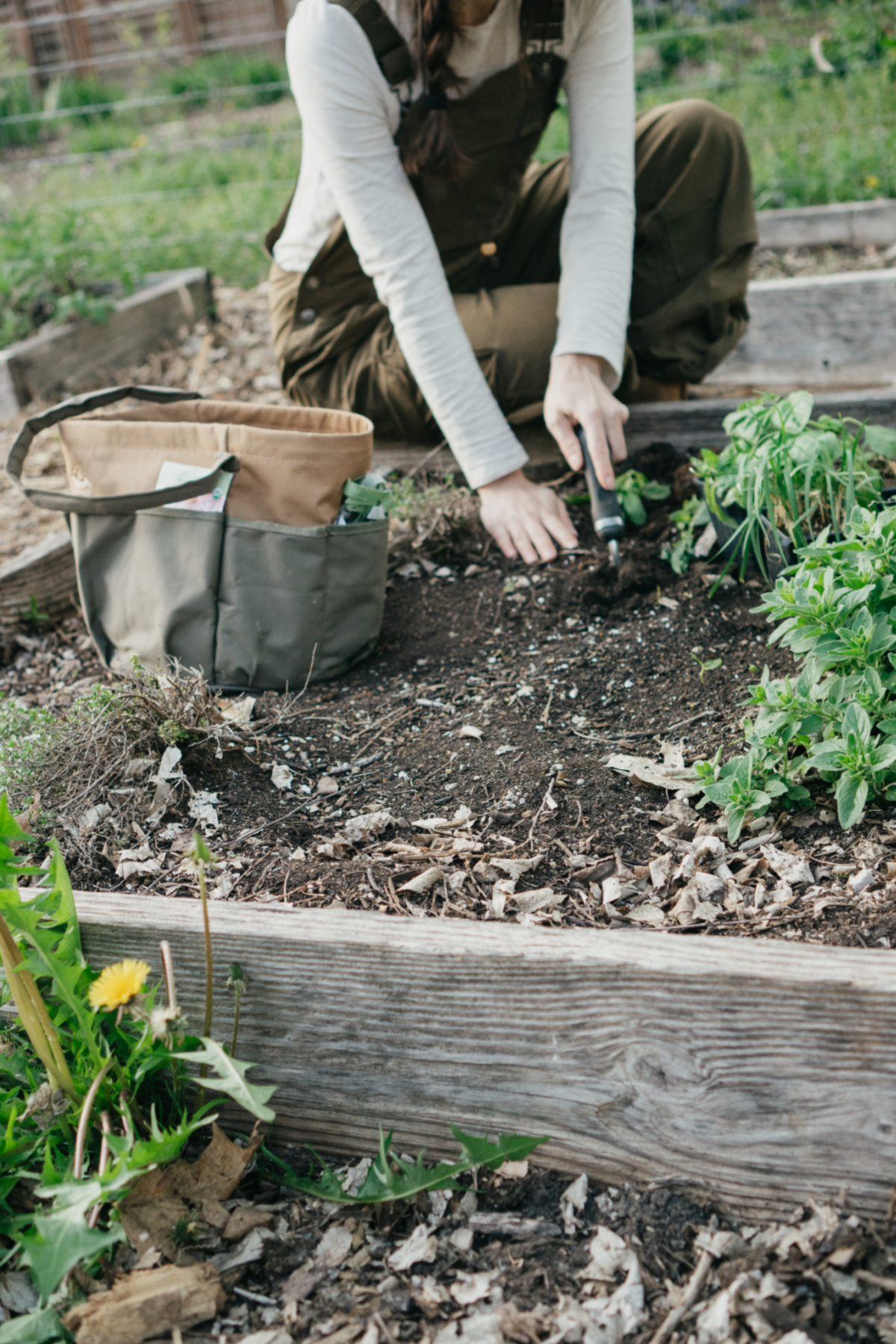
Growing An Herb Garden in Medium Spaces
Not all living styles allow for a thriving garden. For instance, my sister lives in a homeowners association community that has very strict rules on what she can and can’t do with her yard. If that’s your situation, then a raised bed might be a better option. There are tons of options out there for raised beds, so allow yourself to get creative. Raised beds allow you to designate a small space to garden and still be able to harvest lots of herbs for your needs.
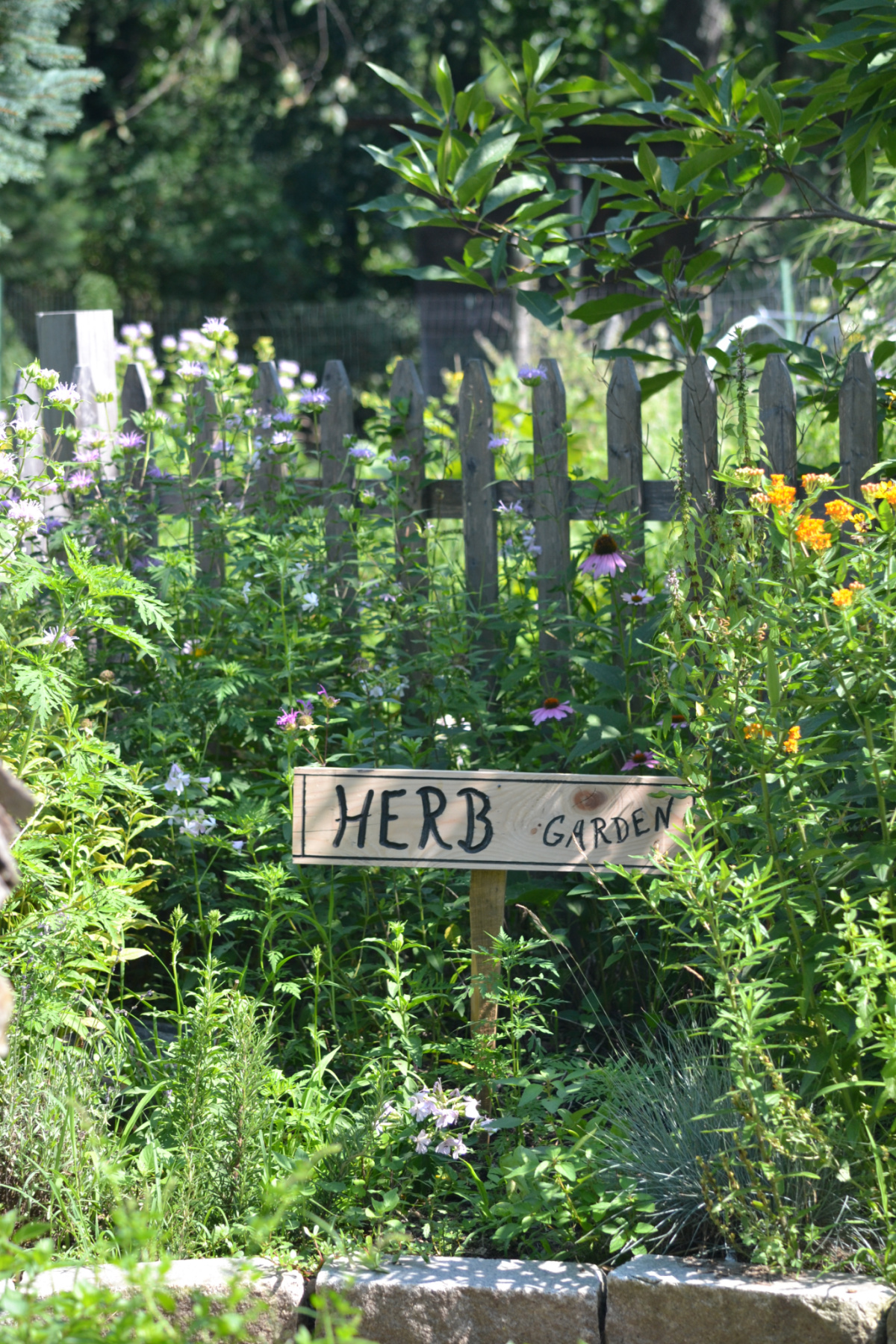
Growing An Herb Garden in Large Spaces
Growing in a larger space can offer a wealth of options. In my first year, I grew in the ground in 800 square feet and also had several container gardens spread throughout. Do you need to use the whole space? Absolutely not! Remember to keep your purpose in mind, as well as how much time and energy you have to dedicate to this growing season.
No matter how much growing space you have this year, there is a growing style to match your goals. Each gardening style has its own unique benefits.
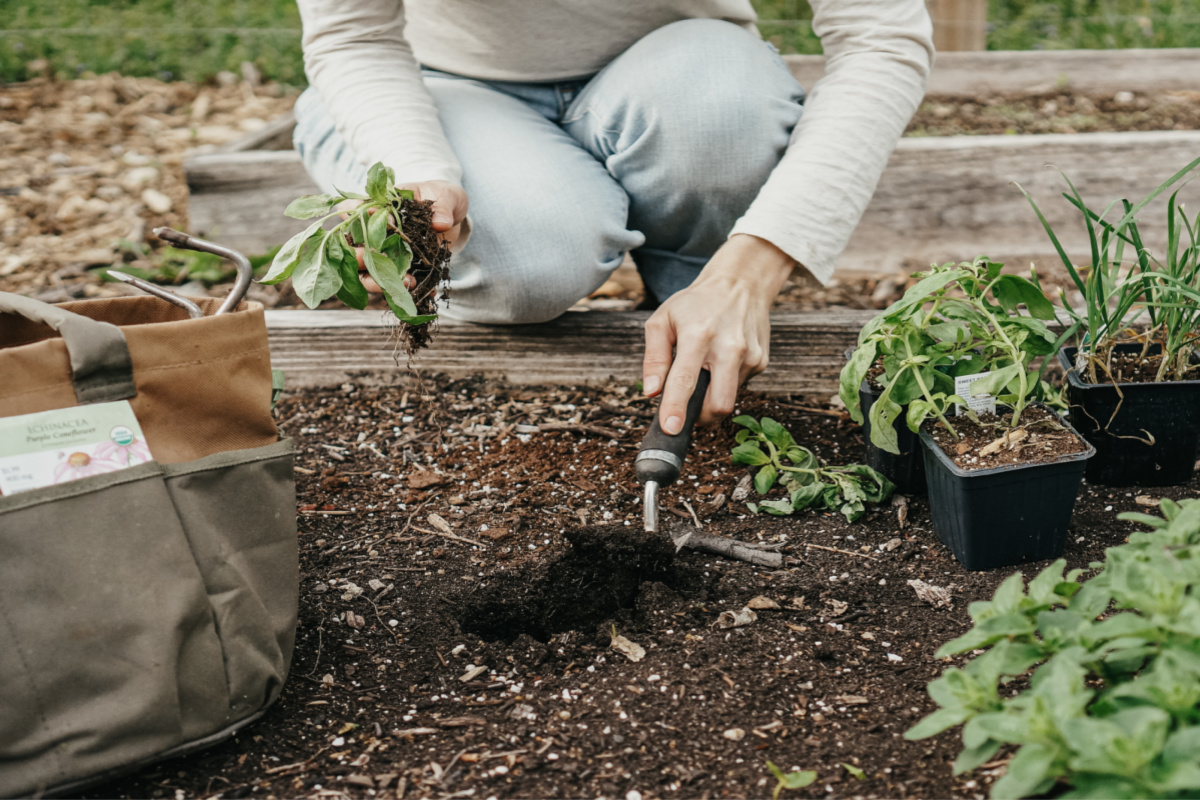
Time to Plant!
Okay, so you’ve got your herb garden plan in place. Now, it’s time to get those seeds started. Here are a few supplies you will need:
- Seeds (If you are brand new to growing try 3-5 varieties to start.)
- Good quality soil
- Seed starting trays and/or containers
- Use what you have. Anything can be a seed starting tray (take-out containers, yogurt containers, eggshells, toilet paper rolls, or try newspaper pots).
- Waterer
- Transfer pots
- Again, you can use whatever you have. Just try and make sure it’s a little bit bigger than your original seedling pot.
- Shovels in relation to your gardening style
- Harvesting/pruning scissors
- Grow lights (optional)
- Heat mats (optional)
Begin to plant your seeds 4-6 weeks before your last harvest date so that your plants are nice and strong for the growing season. Once you’ve planted your seeds, cover them with something clear to mimic the conditions of a greenhouse and keep your seeds nice and warm. To-go food containers or a seed starting tray are great options to keep your seeds cozy while they germinate. Pro tip: keep your seedlings away from drafty windows and place them in a warm sunny spot to let the magic begin.
Once your seeds peek out of the soil, remove the clear top and water them if they look a bit dry. It’s crucial at this stage to make sure your herbs are getting enough sunlight. If you don’t have adequate sunlight in your growing space you may want to think about adding a grow light to help your herb garden along.
Allow your herbs to get nice and strong in your seed starting trays before you move them on to bigger pots. If you notice that your plants are outgrowing your original seed trays, now is the perfect time to upgrade them to a bigger home. I use 4-inch pots, but use whatever you have. Transplanting to bigger pots isn’t absolutely necessary, but it does help create a stronger root system and is best suited for people who are growing in larger spaces or large containers.
Watching the plants germinate and flourish into strong seedlings is one of my favorite stages of growth. When my seeds have sprouted, I then watch them very closely to see how they develop. Last year I was fascinated as I watched the leaves of the lemon balm spread out into their beautiful shape. I spent so many days watching my lemon balm develop, and was amazed at what I was seeing each and every day. I began to play a game with my plants to help me get better at identifying what was in front of me. I would close my eyes and cover the tag that was identifying the plant. I would take the plant in my hands and look, touch, and smell the plant to guess what herb I was learning from that day. Learning this way allowed me to get to know these plants on a deeper level. I sat with my herb garden each day and paid attention to the growth and development along the way. I learned so much during these early growing days and am excited to continue this process into this year’s herb garden.
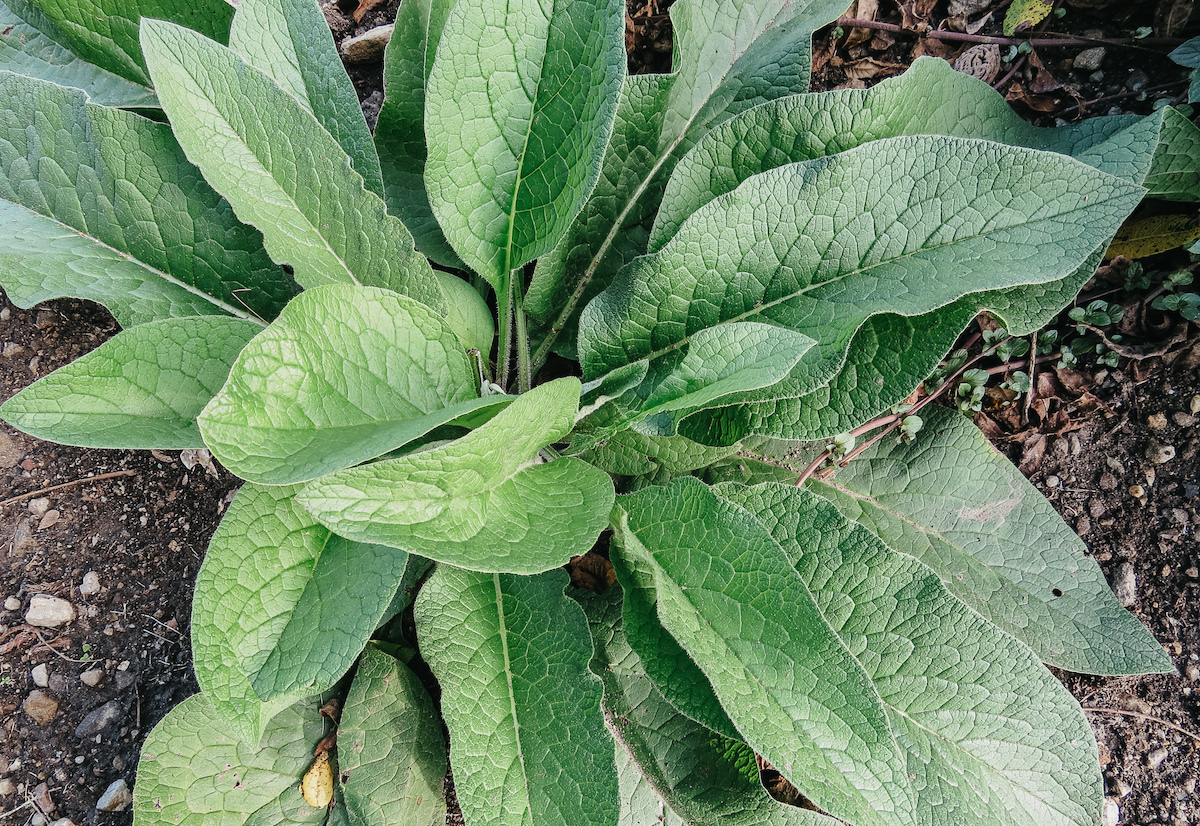
Protect
As your herb garden grows stronger, from time to time you might want to fertilize your plants so you can allow them to thrive. I practice organic garden principles and find that I can feed my plants with lots of natural materials.
Herbs tend to be pretty resilient so you won’t need to fertilize often, but it’s nice to give them some help from time to time. Here are some easy DIY fertilizers that can help you along the way:
- Compost provides a rich source of nutrients to soil and plants.
- Banana Peels give plants potassium. They also help cultivate strong stems and well-developed flowers.
- Eggshells offer calcium. In addition, they strengthen plants on a cellular level.
- Comfrey (Symphytum officinale) or nettle fertilizer tea (Urtica dioica) are sources of nitrogen, phosphorus, and potassium, manganese, and calcium.
- Coffee grounds help acidify your soil. This is especially great for tomatoes.
- Cow/horse manure is high in nitrogen.
- Epsom salt- is high in magnesium, which supports the strength of the plant.
I try my best to use natural fertilizers so I know what’s going into my herb garden. As a bonus, this practice helps me use up my kitchen and garden scraps. If you find that you prefer a commercially-made fertilizer, do your research and make sure that the ingredients listed match your growing style and garden goals.
If you are planting outside and it’s past your frost date, now is the time to get your plants outside and into their final growing space! Before you do that, begin taking your plants outside for a few hours to get them used to the stronger sunlight. Indoor light and/or grow lights are weaker than direct, outdoor sunlight so this process will allow your plants to get used to the sun before their big move outside.
As you are planting outside whether in containers or in the ground, transfer your plants according to your gardening style and spacing guidelines. Herbs want to grow and spread their wings so give them ample space to do so.
One question I am always asked is “how do I keep pests away from my herbs?” There are lots of ways to help deter pests from getting in the way of your beautiful herb garden and not all herbs will need fencing (mint, lemon balm (Melissa officinalis), burdock (Arctium lappa), etc).
One way that I love to protect my plants is to use other plants that pests such as deer don’t like. If you have a deer that is fond of frequenting your garden and want them to stay out of your herbs, try planting a border of marigolds. Marigolds are your garden’s bff! Not only do they keep away deer, but they also bring pollinators to your plants and give your herb garden a boost of color. If you are thinking you need more protection than marigolds, then fencing may be your best option. When considering fencing, keep in mind your design style and fencing needs so that you can choose the right fence for your needs. Anything from pallets to netting, to picket fencing, may just be the barrier that you need to keep your herb garden thriving through this season.
Sit back and watch your garden grow! Spend time with your plants and build a meaningful relationship that will last for years to come. When I first started growing I was so nervous to harvest my plants. I wanted to just let them grow as wildly and freely as possible. I thought that if I left them alone they would be better off. I was wrong. Plants love to be interacted with. I found that the more I paid attention and sat with my garden the stronger my plants were. As I grew more confident, I realized if I harvest or pruned my plants that they would actually get physically stronger. My lemon balm and tulsi actually had stronger flavors because of it! Sit with your plants. Interact with your plants. Harvest your plants. Enjoy your plants!
Growing herbs is a wonderful way to deepen your relationship with plants. Yes, we can learn this information from a book, and yet I found growing herbs to be transformative—for my personal herbal practice and my business.
Whether you are growing in a windowsill or a garden, there are beautiful lessons to be had from growing your own herb garden. Start with what you have, plant seeds that fit your vision, build a relationship with your plants, and enjoy every step along the way.
This year I have expanded my growing space, built a greenhouse, and registered the land as a farm! As you can see, I am passionate about growing herbs and I hope you are too. Happy growing. I am rooting for you! ←see what I did there!
For more on herb gardening, see:
7 Best Plants for a Beginner’s Herb Garden
7 Things to Keep in Mind When Planning Your Herb Garden
12 Permaculture Principles to Use When Planning Your Herb Garden
